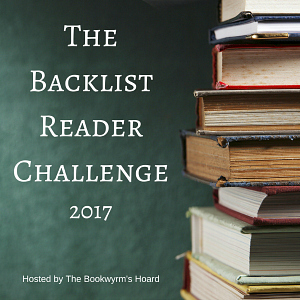 Tess of the D'Urbervilles by Thomas Hardy
Tess of the D'Urbervilles by Thomas Hardy Narrator: Simon Vance
Published by Public Domain Books on December 31st 1969
Genres: Classic
Pages: 411
Format: Audio
Buy on Amazon
Goodreads

The chance discovery by a young peasant woman that she is a descendant of the noble family of d'Urbervilles is to change the course of her life. Tess Durbeyfield leaves home on the first of her fateful journeys and meets the ruthless Alec d'Urberville. Thomas Hardy's impassioned story tells of hope and disappointment, rejection and enduring love.
I have had this book on my TBR pile for a long time, but I was finally moved to pick it up by a recent post on my friend Robin’s blog Better Living Through Beowulf. In this post, Robin, who is a college English professor, writes that Tess is “more relevant than ever” as more and more accusations of sexual harassment and rape come to light, and, as Robin suggests, “certain defenders of Roy Moore, Donald Trump, and Bill Clinton have avoided examining too closely what transpired.” Robin’s particular genius is in applying literature to the current moment. He’s a master at seeing literature as a mirror that reflects our world today, no matter when it was written. I’d love to be a student in his class.
Tess is often painted as spineless, lacking any ability to stand up for herself whatsoever. I don’t see her that way. She actually stands up for herself quite a lot. But she is also a lower-class woman in the late nineteenth century, so no one listens to her, and indeed, most people seem to feel they can abuse her however they like. I find it odd that most of the reviews and analyses about Tess that I have read refer to Alec D’Urberville’s rape of Tess as “ambiguous.” I suppose it could be ambiguous if you think her repeated attempts to push him away, her repeated refusals of his advances, and the fact that he came upon her while she was asleep and attacked her “ambiguous.” Seriously? People read it and think it might not have been a rape? That’s precisely why this book matters. As a victim, Tess is even hoodwinked into thinking she is at fault, that she is somehow to blame for being raped. That she is a fallen woman. And due to the Victorian notions of piety, everyone from her family to her rapist to the man she ultimately marries treats her that way. It’s maddening. I definitely don’t see her as someone who doesn’t stand up for herself so much as she is mowed over by a great big tank.
I really disliked Tess’s family, who seem to use her and unfairly depend on her financially. I disliked her husband, who is a hypocritical prig (and Tess should have told him to shove it when he finally showed up, but sometimes we do stupid things when we’re in love). And Alec D’Urberville is the ultimate dastardly villain, even twirling a mustache, for crying out loud.
I’m glad I finally read the book. I have been wanting to for a long time, and though the characterization in the novel suffers because Hardy was trying to make a POINT, the beautiful descriptions of the landscape redeemed the book for me.
As usual, Simon Vance is a brilliant narrator. I highly recommend him if you are looking for audio books and are not sure which narrators to pick.
 I can’t remember when this book first went on my TBR pile, but it was probably years ago, so I’m counting it for the Backlist Reader Challenge.
I can’t remember when this book first went on my TBR pile, but it was probably years ago, so I’m counting it for the Backlist Reader Challenge.
Unrelated: I have a new plugin that allows me to pull some automated data about books I review, but it also changes the layout of posts a bit. If you have opinions about it, please share.











